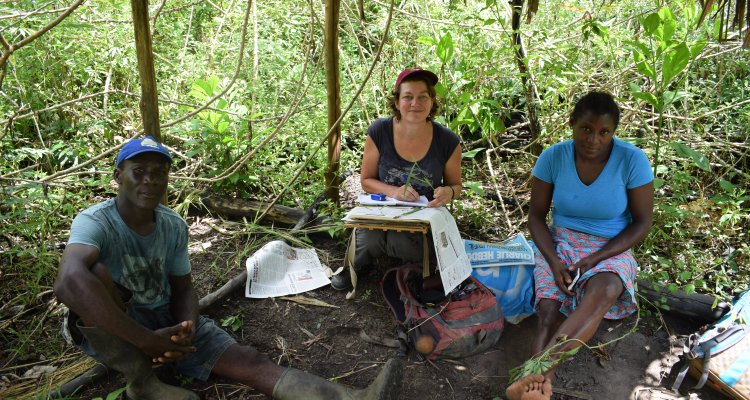
Project
Hidden crop diversity in Suriname
Maroons, descendants of enslaved Africans who escaped from plantations into the interior forests of Suriname, cultivate an astonishing number of rice varieties, most of which are Asian rice (Oryza sativa) and some African rice (O. glaberrima). We will trace the geographic origin of Maroon rice by characterising their genomic diversity and linking Maroon oral history with published and archival sources.
Maroons, descendants of enslaved runaways who live in tribal communities in the remote rainforests of Suriname and French Guiana, grow 200+ rice varieties that are hardly known to science, but differ substantially from modern cultivars. This research combines ethnobotanical surveys, archival research and advanced genomic analysis of traditional Maroon rice varieties to analyze their geographical origins, migration history and the methods and motivations of rice farmers to maintain this unique diversity. PhD Nicholaas Pinas has done fieldwork in Maroon villages to document rice varieties, agricultural practices, traditional knowledge. Postdoc Marieke van de Loosdrecht compares Maroon rice samples to rice varieties worldwide (including wild and weedy types) by means of whole-genome sequencing. Co-applicant Eric Schranz supervises the genomic research of the postdoc and MSc students. Co-applicant Tinde van Andel supervises the PhD student and MSc students in ethnobotanical and archival research.
Project description
Suriname Maroons, descendants of enslaved Africans, grow hundreds of rice varieties that are hardly known to science but differ substantially from modern cultivars. Where does the Maroon rice come from? This unique combination of ethnobotanical and genomic research links Maroon oral history to written sources and the DNA of their rice. This project contributes to the revaluation of a food crop with substantial importance for current and future food security and Afro-American cultural heritage.
Results
Our results indicate that Maroon rice fields reflect 370 years of migration history: a mix of ancient African varieties, historic US cultivars, rice exchanged with Asian contract laborers after the abolishment of slavery and self-developed varieties by means of crossing with wild rice. Our innovative combination of ethnobotanical and genomic research links Maroon oral history to written sources and the DNA of their rice. Rice breeders urgently need to develop more sustainable cultivars that combine higher yields with healthier grains and reduced environmental footprints. Maroon rice, grown without fertilizer or pesticides, shows adaptations towards marginal environments and pest resistance and thus represents an untapped genetic resource for breeding new cultivars resilient to future challenges. During this project, over 400 Maroon rice landraces have been conserved in the SNIR/ADRON germplasm bank for the first time in history. Collaboration with the international Crop Trust has led to several community seed banks in Maroon village and safeguarding Maroon rice in the Svalbard Seed Vault.
Several museums and cultural groups have used our research to draw attention to Maroon culture, Dutch colonial history and resistance to slavery. Examples are the Tropenmuseum, Rijksmuseum Amsterdam, Saamaka museum, Pikien Slee (Suriname), Boerhaave museum, Naturalis, Aucan museum in Diitabiki (opening soon), Stichting De MIX Wereldmuziektheater and Dance Group Kula Skoro.
Publications
-
Maroon Women in Suriname and French Guiana : Rice, Slavery, Memory
Slavery and Abolition (2024), Volume: 45, Issue: 2 - ISSN 0144-039X - p. 187-211. -
The role of crop diversity in escape agriculture; rice cultivation among Maroon communities in Suriname
Plants People Planet (2024), Volume: 6, Issue: 5 - ISSN 2572-2611 - p. 1142-1149. -
Vernacular names of traditional rice varieties reveal the unique history of Maroons in Suriname and French Guiana